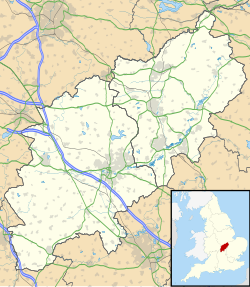| Irthlingborough Lakes and Meadows | |
|---|---|
 View looking North across Corner Lake | |
| Location | Irthlingborough, Northamptonshire |
| Coordinates | 52°19′10.92″N0°36′10.44″W / 52.3197000°N 0.6029000°W |
| Area | 117 hectares (290 acres) |
| Created | 2012 |
| Operated by | Wildlife Trust for Bedfordshire, Cambridgeshire and Northamptonshire |
| Status | Open all year |
| Website | http://www.irthlingboroughlakesandmeadows.org |
Irthlingborough Lakes and Meadows (grid reference SP953699 ) is a 117-hectare (290-acre) nature reserve in Northamptonshire, owned and managed by the Wildlife Trust for Bedfordshire, Cambridgeshire and Northamptonshire. [1] The character of the reserve is defined by flooded gravel pits and wet grassland, providing an excellent habitat for large variety of wetland flora and fauna.
Contents
The site forms part of the larger Upper Nene Valley Gravel Pits Site of Special Scientific Interest (SSSI) and Special Protection Area. [2]
It is situated in close proximity to several other Wildlife Trust nature reserves, such as Higham Ferrers Pits, Wilson's Pits and Ditchford Lakes and Meadows, significantly improving the benefit for wildlife by creating joined-up protected landscapes. It is adjacent to Stanwick Lakes, a reserve managed by the Rockingham Forest Trust.
